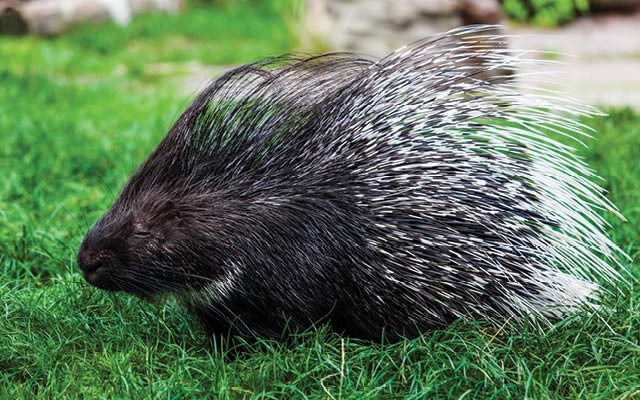It was 6:30 a.m. on a dark, cold morning in December.
My mood reflected the weather as I walked to my car in Cheakamus Crossing to begin another workday. I was suddenly stopped in my tracks by a large animal crossing the road just a few metres in front of me and, naively, I assumed it was a cat.
As my vision focused, however, I realized it was not a cat, or even a raccoon, but a porcupine! Being my first encounter with a porcupine, my mood immediately lightened.
It's funny the power nature has over us, putting every feeling or mood into perspective and enabling the realization that so much more is going on around you than just your immediate thoughts and interactions.
The North American porcupine (Erethizon dorsatum) is a large rodent that can be found throughout most of Canada, as well as the western United States and Mexico.
Coniferous, deciduous and mixed-forest habitats are home to these rodents. Predominantly solitary, the porcupine makes its den in hollow trees, decaying logs or even caves. Although they don't hibernate, they may stay within the den during bad weather, even bunking with other porcupines.
The hairless soles of their feet make the porcupine an excellent tree climber, allowing them to spend large amounts of their time up amidst the woody limbs of Whistler's forests.
North American porcupines sport a brownish-yellow to black coat on their round body, with short sturdy legs and a small head and eyes. They range in length from 60 to 90 centimetres and weigh between 12 to 35 pounds.
Although they have mediocre vision, their hearing and sense of smell is excellent.
A herbivore at heart, the porcupine primarily eats leaves, fruit, bark, twigs and green plants, like skunk cabbage. These rodents are primarily nocturnal.
The most recognizable and identifiable feature of the porcupine is its quills, which are hairs made of keratin. Approximately 30,000 quills cover the porcupine's body, excluding its stomach and nose.
The quills are solid at the base and tip, hollow in the middle and covered in tiny barbs that make their removal difficult. The quills typically lay flat against the body until the porcupine feels threatened, at which time they become raised to ward off predators. Porcupines cannot shoot the quills, but they release easily when touched. New quills then grow to replace any that have been lost.
North American porcupines are known to inhabit Whistler but are not spotted regularly. If you come across one, please contact the Whistler Naturalists, and don't forget to look up as well as down!
The Whistler Naturalists are a non-profit volunteer group dedicated to increasing local knowledge of the natural world in the Whistler area. For more information or to get involved, please visit WhistlerNaturalists.ca.




